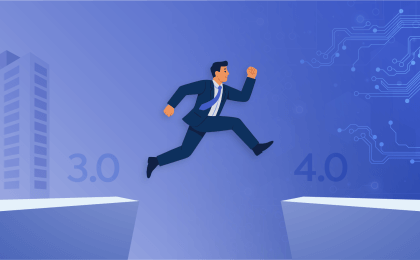(This article originally appeared on HR Daily Advisor.)
In 2015, millennials surpassed Gen Xers as the largest demographic in the United States workforce. Typically considered as anyone born between 1984 and 1997 (give or take a few years depending on your definition), the current Millennial ranges from anyone in their early 20s to their mid 30s. In terms of the work force, that encompasses the post-high school and post-college crowd, along with the group that has been working for up to 10 years.
Because this demographic has become so prominent in the workforce, it’s important for hiring managers and HR staff to think differently when it comes to engaging millennials. Established hiring protocols have evolved over time, but it’s easy for many companies — and in fact, entire industries—to continue with outdated policies, particularly with the rapid change of technological capabilities in the past decade.
The following ideas are designed to help HR departments focus on successfully engaging with millennials:
#1 Create a specific role and path.
Going by generational stereotypes, Baby Boomers lived to work (their job was their identity) while Gen Xers worked to live (their job was a means to an end). Millennials? They’re somewhere in between, but with a twist.
Millennials can be immensely loyal, with nearly 80% thinking they’ll work for four or fewer companies in their life; but they want to know their role, tasks, and path for growth. They also want to know a company’s identity and values as they seek to create positive change in their world. Try to present all of this upfront when interviewing millennials.
#2 Offer work-life balance.
The idea of the 9-to-5 job doesn’t exist for most millennials. Instead, they crave greater flexibility to complete their tasks. For members of previous generations, this can be construed as laziness, but studies actually show strong productivity that just takes place at unorthodox hours.
Such strong productivity is made feasible with flexible hours and remote access — two benefits that are becoming increasingly popular for employee satisfaction and retention. This flexibility allows millennials to have it both ways: enjoy work-life balance while remaining committed and productive to the task at hand.
#3 Test for strong candidates.
The traditional interview process is outdated because it focuses on experience and presentation rather than potential and ability, particularly when that presentation can impact a hiring manager’s unconscious bias. Technology has afforded HR departments new tools to assess a candidate’s cognitive abilities, allowing hiring of millennials based on their skills and potential rather than a resume.
These types of tests come in many forms, from standardized pre-interview screeners to new cutting-edge smartphone apps. Apps can now enable candidates to test their skills and get exposure to different types of jobs.
With assessment tools like these, it’s possible to seek strong cognitive abilities and unique non-work experiences—unearthing high-value candidates even if they’ve just graduated from college. For sheerly practical reasons, millennials don’t have the luxury of long resumes, but now they can be judged on their long-term potential rather than depth of their resume.
#4 Consider unique benefits.
Just a decade ago, the idea of unique benefits from a corporation typically included items like subsidized gym memberships or free food. Today, millennials want more. That doesn’t mean that they’re demanding more benefits in negotiations, but instead are more likely to prefer working at places that offer a unique range of benefits.
Things like monthly Lyft/Uber credits, on-site child care, paternity leave, volunteer opportunities, and dog-friendly work days carry a lot of weight when it comes to recruiting and retaining millennials. Remember, for millennials, the office is not just about work; they seek purpose, development, balance, and satisfaction. Offering more than just a paycheck goes a long way to fulfilling that.
As the years pass, the number of millennials in the workforce will only increase. For those born in 1997, college graduation is just around the corner—and that doesn’t even factor millennials who are taking advantage of new methods of education, from online certifications to coding bootcamps. All of this means that millennials will surge into the workforce even moreso over the next 5 years; it’s up to HR departments and hiring managers to understand how best to engage this talent.
There’s a stereotype of millennials as flighty with short attention spans, but given the right situation, this generation of workers can be just as loyal as previous ones—with a unique sense of purpose and a technology skillset previously unseen. To properly capture and retain that talent, it all starts with understanding what they want. So while it may signify a major shift in traditional thinking, building elements that appeal to millennials is an investment in the future of your company.





